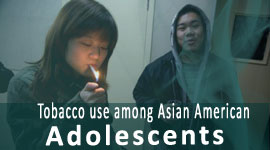Tobacco, Alcohol,
and Other Drug Use
Lorem ipsum dolor sit amet, consectetur adipiscing elit. Sed commodo hendrerit mi. Praesent libero lorem, sollicitudin bibendum, ultricies in, pharetra id, risus. Donec malesuada tristique felis. Etiam ligula. Lorem ipsum dolor sit amet, consectetur adipiscing elit.

Predicting tobacco and alcohol initiation
This study was funded by the National Institute on Drug Abuse. Unlike many other studies, this study evaluated a Multi-Attribute Utility model based on Edwards’ (1954) classic presentation of subjective expected utility (SEU), with the goal being to predict which individuals within a cohort of young nonusers eventually took up tobacco or alcohol use. In addition, this study was not only designed to examine adolescents' negative perceptions regarding drug use, but also explored their positive evaluations of drugs. The underlying philosophy is that anticipated positive consequences play a prominent role in the decisions of adolescents who choose to initiate drug use. Related Article Related Newsletter

Tobacco use among Asian American adolescents
This study was funded by California Tobacco Related Disease Research Program. The primary objective of this project was to examine psychological, social and cultural factors that influence the initiation of smoking among Asian-American adolescents, that is, the influence of acculturation and family functioning on the relationship between self-image and smoking behaviors among Asian-American adolescents. The result of this study indicated that smoking rates vary across Asian subgroups. In contrast to the large gender disparity in the ancestral countries, smoking prevalence rates in California were equal for boys and girls. Level of acculturation did not predict smoking in any Asian-American subgroup. However, among Asian-American girls as a group, those who were more highly acculturated were significantly more likely to have tried smoking. High family functioning and high self-image are significantly associated with decreasing risk of smoking for Asian-American adolescents. Related Article Related Article

Ecstasy Use among Youth
This study was a State funded project to develop a list of consequences anticipated by teenagers regarding use of ecstasy, the second most popular illicit drug used by California youth. Comprehension of these expectancies is crucial to understanding why an adolescent would engage in a behavior known to be risky. This refined list will be suitable for the large-scale study that evaluates the Multi-Attribute Utility model of the Behavioral Decision Theory. The list is also interesting on its own, in that we can compare the motives underlying ecstasy usage with those already established for alcohol and other drug use.
